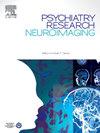Heartbeat evoked potential and spectral analysis in patients with panic disorder during resting state
IF 2.1
4区 医学
Q3 CLINICAL NEUROLOGY
引用次数: 0
Abstract
Panic disorder (PD) involves recurrent panic attacks and anticipatory anxiety, with interoceptive dysfunction potentially contributing to its pathophysiology. This study analyzed differences in heartbeat evoked potential (HEP) and spectral power between 19 PD patients and 21 HCs during eyes-closed (EC) and eyes-open (EO) conditions to assess interoceptive processing and cortical arousal patterns. Key findings showed: (1) Compared to healthy controls, panic disorder patients exhibited higher interoceptive attention scores (BPQ-VSF: t = -4.944, p < .001; noticing: t = -1.156, p = .255), greater interaction between interoception and emotion (not-worrying: t = 4.487, p < .001; emotional awareness: Z = 2.009, p = .004), greater difficulty in regulating attention to maladaptive interoceptive signals (not distracting: t = 2.504, p = .017), and lower sense of safety and trust in the body (trusting: t = -2.858, p = .004); (2) PD patients exhibited reduced HEP amplitudes in left parieto-occipital regions during EC compared to HCs; (3) Spectral analysis revealed increased beta-band power in PD patients during EC (t = -0.804, p < .05), further elevated during EO (t = -0.553, p < .001) - a pattern absent in HCs. These results demonstrate impaired interoceptive regulation (diminished HEP modulation) and cortical hyperarousal (elevated beta oscillations) in PD. The study provides novel electrophysiological evidence for PD's neuropathology, identifying interoception-arousal dysregulation as a potential treatment target.
惊恐障碍患者静息状态下的心跳诱发电位及频谱分析
惊恐障碍(PD)包括复发性惊恐发作和预期性焦虑,并伴有内感受功能障碍,可能有助于其病理生理。本研究分析了19名PD患者和21名hc患者在闭眼(EC)和睁眼(EO)状态下的心跳诱发电位(HEP)和频谱功率的差异,以评估内感受加工和皮层唤醒模式。主要发现:(1)惊恐障碍患者的内感受性注意得分(BPQ-VSF: t = -4.944, p <;措施;注意:t = -1.156, p = .255),内感受和情绪之间的相互作用更大(不担心:t = 4.487, p <;措施;情绪意识:Z = 2.009, p = 0.004),对适应不良的内感受信号的注意调节难度较大(不分散注意力:t = 2.504, p = 0.017),对身体的安全感和信任感较低(信任:t = -2.858, p = 0.004);(2)与hc相比,PD患者在EC期间左侧顶枕区HEP振幅降低;(3)谱分析显示PD患者在EC期间β波段功率增加(t = -0.804, p <;0.05),在EO期间进一步升高(t = -0.553, p <;.001) -这种模式在hcc中不存在。这些结果表明PD患者的内感觉调节受损(HEP调节减弱)和皮质亢奋(β振荡升高)。该研究为PD的神经病理学提供了新的电生理证据,确定了内感受觉醒失调是一个潜在的治疗靶点。
本文章由计算机程序翻译,如有差异,请以英文原文为准。
求助全文
约1分钟内获得全文
求助全文
来源期刊
CiteScore
3.80
自引率
0.00%
发文量
86
审稿时长
22.5 weeks
期刊介绍:
The Neuroimaging section of Psychiatry Research publishes manuscripts on positron emission tomography, magnetic resonance imaging, computerized electroencephalographic topography, regional cerebral blood flow, computed tomography, magnetoencephalography, autoradiography, post-mortem regional analyses, and other imaging techniques. Reports concerning results in psychiatric disorders, dementias, and the effects of behaviorial tasks and pharmacological treatments are featured. We also invite manuscripts on the methods of obtaining images and computer processing of the images themselves. Selected case reports are also published.

 求助内容:
求助内容: 应助结果提醒方式:
应助结果提醒方式:


